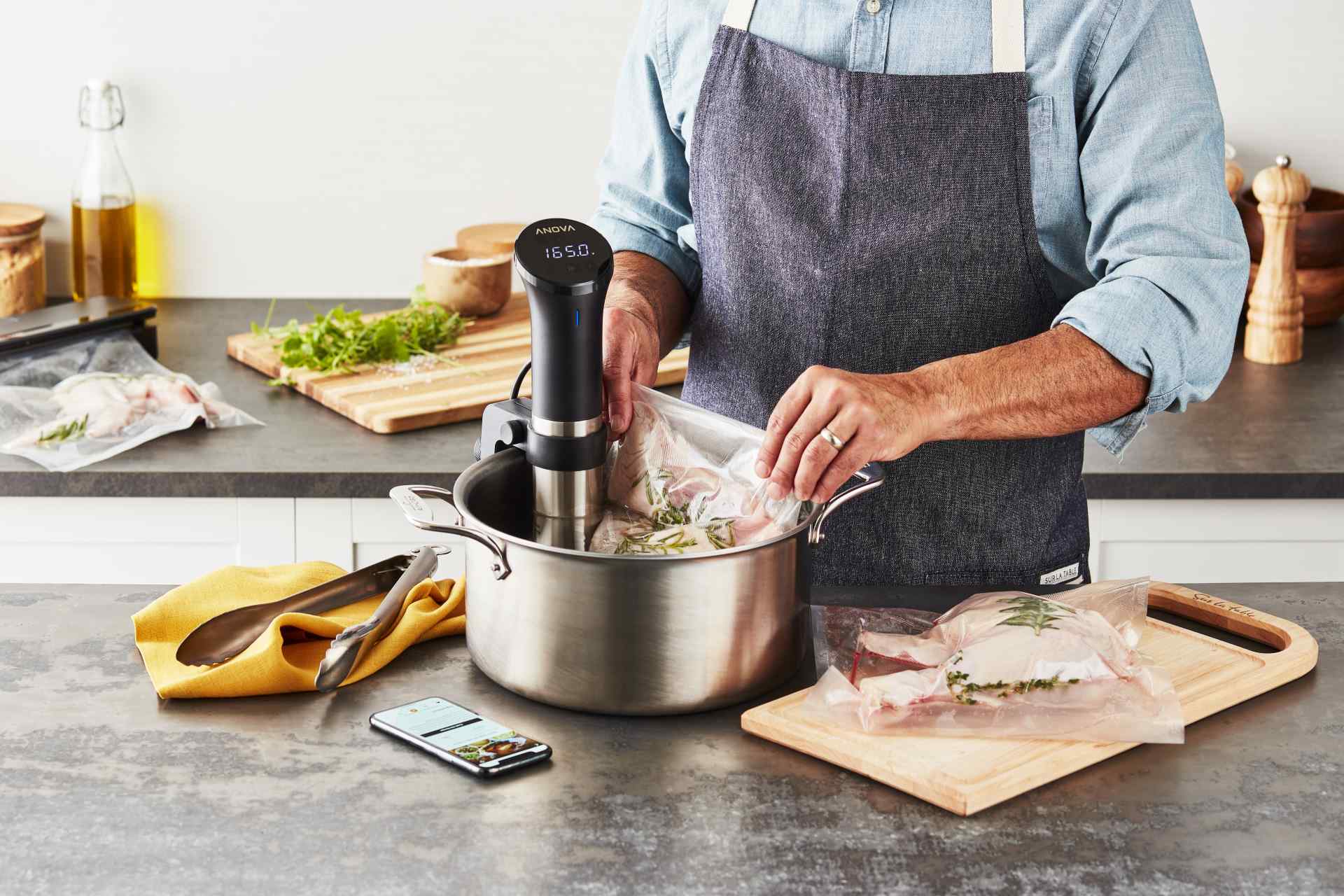Decisions, decisions.


Imagine being able to cook steak so tender it practically melts in your mouth, vegetables bursting with flavor straight from the garden and eggs cooked to the exact consistency you love, every single time. Sous vide, French for “under vacuum,” involves cooking food slowly in a precisely controlled water bath, ensuring that ‘just right’ finish we all aim for. It’s like having a friendly kitchen companion that never misses the mark.
In this article, discover everything about the history, benefits and diverse applications of sous vide cooking—and why it has become a beloved technique for home cooks and chefs alike to achieve perfect culinary results.
Hungry for more? From sous vide machines to vacuum sealers and bags, our Sous Vide Collection has everything you need to get started!
Sous vide cooking involves sealing food in airtight bags and cooking it in a water bath at a precisely controlled temperature.
Unlike traditional cooking methods that involve high heat and potentially uneven cooking, sous vide provides consistent results and retains the food’s moisture, flavor and nutrients. The process is straightforward: seal the food, set the temperature, submerge it in water and wait. The result is perfectly cooked meals, from steaks cooked to the exact level of doneness to vegetables that retain their vibrant colors and nutrients.
The story begins in the 1970s with a French chef named Georges Pralus. He figured out that cooking foie gras sealed in a vacuum bag kept all its delicious flavors intact, with no shrinkage. This was a big deal in the culinary world.
Then, a scientist named Bruno Goussault came along and helped fine-tune the method, focusing on how precise temperature control could bring out the best in food. Together, these two are credited as the fathers of sous vide, making it a go-to method for high-end chefs.
Fast forward to the last decade or so, and sous vide isn’t just for the fancy restaurant scene anymore. Thanks to tech advancements, the equipment needed for sous vide cooking has shrunk in size and price, making it a gadget that anyone can have on their kitchen counter. Now, immersion circulators (the tool that keeps the water at just the right temperature) are as easy to use as a toaster, and they don’t take up much more space than a blender.
The internet also deserves a big high-five for helping sous vide go mainstream, too. Food lovers and home chefs share their sous vide successes on social media and cooking blogs, making it less intimidating and more “I gotta try this.”
Plus, seeing a TV chef pull a perfectly cooked steak out of a water bath definitely sparks some kitchen envy.
Sous vide cooking, with its unique blend of precision and simplicity, offers a ton of advantages that cater to both the gourmet chef and the home cook alike. This method of cooking not only elevates the dining experience but also simplifies the cooking process, making it accessible to anyone looking to enhance their culinary skills. Here are the key benefits that make sous vide a favorite in kitchens around the globe:
From meats and vegetables to desserts and infusions, sous vide cooking offers a wide array of culinary opportunities. Here’s a glimpse into some of the popular sous vide’s applications:
Getting into sous vide cooking can elevate your everyday meals to gourmet levels. Starting out on this path, though, means you’ll need the right tools. For any home cook keen to dive into the precision and flexibility of sous vide, a few essential gadgets can really make a world of difference.
Starting with sous vide cooking is like unlocking a secret level in your kitchen skills, but it helps to know a few tricks before you dive in. Whether you’re after the juiciest steak or just experimenting with veggies, a couple of tips can set you on the right path.
Begin with simple recipes: Start your sous vide journey with simple recipes to get a feel for the process before moving on to more complex dishes. Here are a few easy recipes to explore:
Experiment with temperatures and times: Use sous vide cooking as an opportunity to experiment with different temperatures and cooking times to find your perfect level of doneness.
Incorporate finishing techniques: While sous vide can produce incredible results on its own, finishing meats with a quick sear on a hot pan can add a delicious, caramelized exterior.
Hungry for more? From sous vide machines to vacuum sealers and bags, our Sous Vide Collection has everything you need to get started!
JOIN THE CONVERSATION